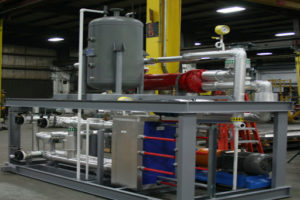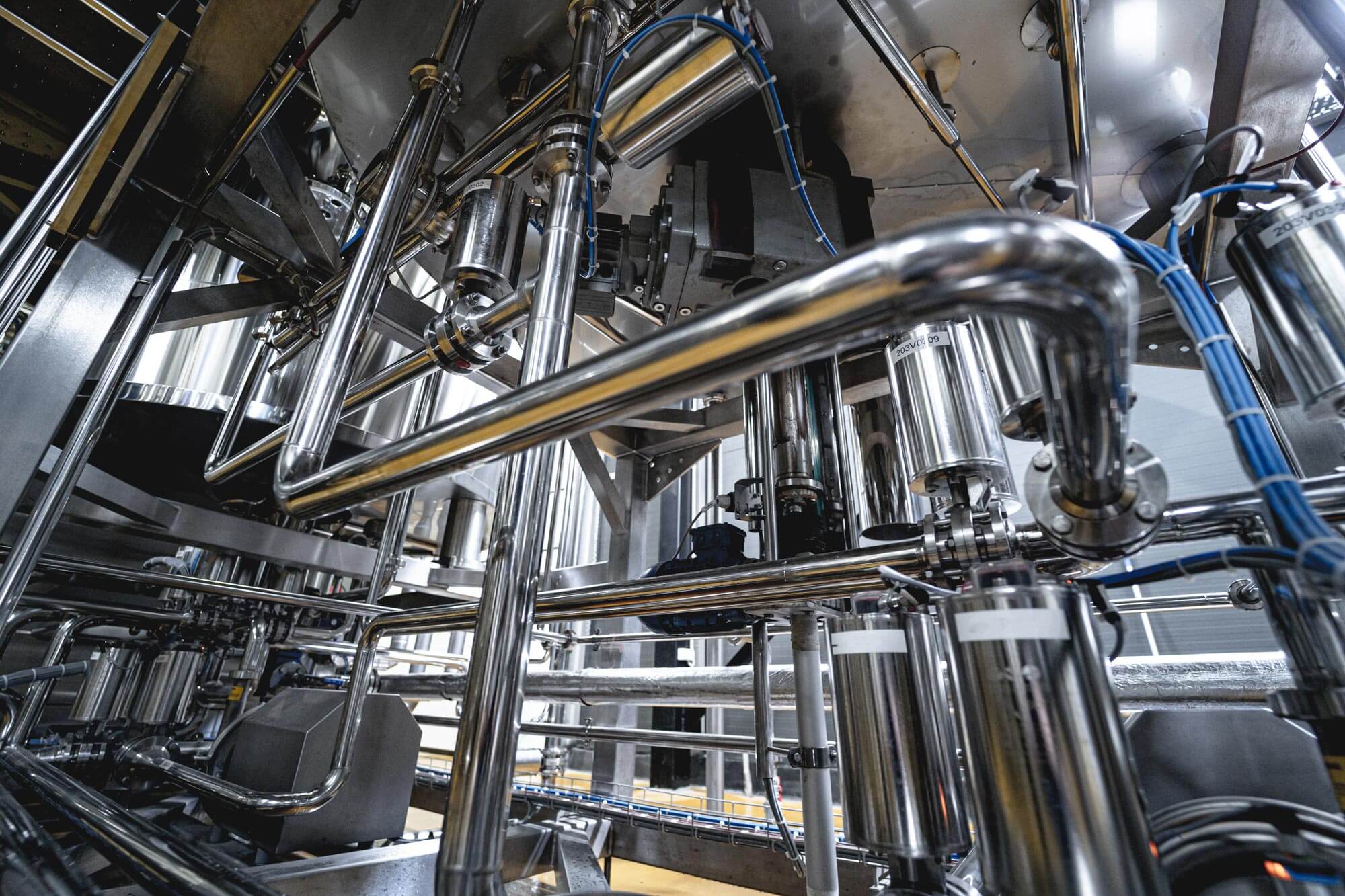The Function of Heat Transfer Solutions in Sustainable Power Solutions for the Future
Heat transfer systems are vital in the pursuit for sustainable power options. They optimize thermal energy management, boosting the efficiency of eco-friendly modern technologies. By utilizing systems like convection, radiation, and transmission, these systems decrease energy losses. Their role in solar thermal and geothermal applications is particularly substantial. As developments emerge, the possibility for more developments raises crucial questions concerning future energy strategies. What growths will shape the landscape of sustainable energy?
Comprehending Heat Transfer Systems

The Significance of Thermal Energy Management
Reliable thermal power monitoring is vital for making best use of energy effectiveness and reducing waste in numerous systems. By regulating temperature and maximizing Heat transfer procedures, companies can significantly decrease power usage and functional expenses. Effective management entails the implementation of advanced modern technologies and techniques that monitor and manage thermal conditions within systems, making sure that energy resources are made use of efficiently. In enhancement, proper thermal power management adds to lowering greenhouse gas discharges, straightening with global sustainability goals. It additionally improves system dependability and efficiency, bring about enhanced product top quality and longer tools life expectancy. Inevitably, prioritizing thermal power administration is a crucial step towards creating extra lasting power remedies and fostering an accountable method to energy consumption in industrial and household contexts.
Applications of Heat Transfer in Renewable Resource
While various renewable resource sources assure sustainability, the effective application of Heat transfer plays a crucial duty in their efficiency. In wind energy systems, Heat transfer is utilized for wind turbine component cooling, boosting efficiency and durability. Geothermal energy relies upon efficient Heat exchange in between the planet's subsurface and the fluid distributing in the system, making the most of power extraction. Biomass energy procedures likewise take advantage of Heat transfer, as it helps in transforming natural products right into functional gas with pyrolysis and gasification. In addition, in hydropower, maintaining suitable temperatures in storage tanks can enhance energy outcome. Each of these applications shows the crucial value of Heat transfer systems in enhancing eco-friendly power modern technologies, eventually adding to an extra sustainable power future.
Enhancing Solar Thermal Power Efficiency
As solar thermal power systems remain to progress, boosting their efficiency has come to be vital for optimizing power outcome. Breakthroughs in Heat transfer innovations, such as boosted thermal storage space materials and innovative Heat exchangers, play a significant function in enhancing performance. By making use of innovative materials that have premium thermal conductivity, systems can capture and move Heat better. In addition, integrating monitoring systems that comply with the sunlight's course assurances that collection agencies receive perfect solar exposure throughout the day. Utilizing nanotechnology in solar absorbers can additionally enhance power absorption prices. Incorporating computerized control systems assists handle and control temperature levels energy distribution effectively, leading to decreased losses and boosted general system efficiency. These improvements lead the way for even more sustainable solar thermal energy services in the future.
Geothermal Home Heating: A Lasting Service
Geothermal home heating provides a feasible option for sustainable power, offering considerable ecological advantages via minimized greenhouse gas exhausts. Its effectiveness and cost-effectiveness make it an eye-catching option to standard heater. However, challenges associated to implementation needs to be addressed to maximize its prospective influence.
Ecological Benefits of Geothermal
Typical home heating techniques contribute significantly to greenhouse gas exhausts, geothermal heating presents a compelling choice that minimizes environmental impact. By taking advantage of the Earth's interior Heat, geothermal systems use a renewable resource source, markedly lowering dependence on nonrenewable fuel sources. This method produces very little carbon emissions, making it a cleaner choice for commercial and property heating. Furthermore, geothermal systems advertise energy performance, as they call for less power compared to standard heating unit. DVS Heat Transfer Systems. The utilization of geothermal power additionally helps in lowering air pollution, improving neighborhood air high quality and public health. As a lasting remedy, geothermal home heating supports environment change mitigation initiatives, positioning itself as an essential part in the change towards a greener future
Effectiveness and Cost-Effectiveness
Exactly how does geothermal home heating gauge up in regards to effectiveness and cost-effectiveness contrasted to standard furnace? Geothermal home heating shows exceptional efficiency, typically achieving a coefficient of performance (POLICE OFFICER) of 3 to 5, meaning it produces 3 to five devices of Heat for every single device of electrical energy consumed. This effectiveness converts right into reduced operating prices, particularly in areas with steady geothermal sources. Preliminary installation expenses can be more than conventional systems; nonetheless, long-term financial savings on energy expenses and lowered upkeep expenses can offset these upfront financial investments. Furthermore, many governments incentivize geothermal systems via refunds and tax credit scores, boosting their cost-effectiveness. On the whole, geothermal heating emerges as a sustainable and financially sensible alternative to more standard heating options.
Implementation Difficulties and Solutions
Countless challenges can hamper the widespread application of geothermal heating systems, in spite of their clear benefits as a sustainable power solution. High first setup expenses usually deter home owners and financiers, making financing a significant barrier. Additionally, the geographical constraints of suitable geothermal websites limit ease of access in particular click here to read regions. Local regulations and allowing procedures can likewise complicate job development, resulting in hold-ups. Public awareness and understanding of geothermal systems continue to be reduced, hindering approval. To resolve these obstacles, targeted education and learning projects can enhance open secret, while federal government rewards can reduce financial concerns. Collaborating with regional authorities to streamline guidelines may help with smoother job authorizations, ultimately advertising the adoption of geothermal heating as a feasible, lasting power choice.
Technologies in Heat Transfer Technologies
Advancements in Heat transfer innovations play an important function in boosting power efficiency and sustainability. Advanced Heat exchangers and stage change products go to the forefront of these developments, using significant improvements in thermal administration. These modern technologies not just optimize power usage but also add to reducing ecological effect in various applications.
Advanced Heat Exchangers
Advanced Heat exchangers play a crucial function why not try here in enhancing power efficiency throughout various applications in lasting power remedies. These devices facilitate the transfer of Heat in between 2 or even more liquids, considerably minimizing power usage in procedures such as industrial home heating, cooling, and power generation. Technologies in materials and style, such as the use of nanofluids and portable setups, have actually brought about improved thermal performance and minimized dimension requirements. Furthermore, developments in digital surveillance and control systems enable enhanced procedure, further enhancing effectiveness. By lessening waste Heat and making best use of energy healing, progressed Heat exchangers add to reduce carbon footprints and support the change toward eco-friendly technologies. Their continued development is crucial for attaining international power sustainability objectives.
Phase Change Products
The combination of stage modification products (PCMs) into Heat transfer modern technologies represents a significant innovation in power monitoring and effectiveness. PCMs absorb and release thermal energy throughout their stage modifications, making it possible for efficient temperature law in building products and power systems. By keeping excess Heat during peak durations and releasing it when need rises, PCMs contribute to pack moving and power conservation - DVS Heat Transfer Systems. This capability improves the performance of renewable resource systems, especially in solar thermal applications. Furthermore, PCMs can enhance the thermal convenience of indoor settings, reducing reliance on standard home heating and cooling down methods. As innovations in PCM formulations continue to emerge, their role in sustainable energy options is poised to expand, providing appealing opportunities for future research and application

Future Leads for Heat Transfer in Lasting Power
As the demand for lasting energy options continues to climb, the duty of Heat transfer systems is ending up being progressively important fit future technologies. Advancements in layouts and materials are anticipated to improve effectiveness in Heat transfer, lowering energy losses in different applications. The integration of innovative thermal storage space systems, such as stage adjustment products and thermochemical storage space, will enable better administration of power sources. Research study right into nanofluids and biomimetic Heat exchangers may additionally maximize thermal performance. The adoption of wise technologies will allow for real-time tracking and flexible control of Heat transfer procedures. These improvements are poised to greatly add to the overall like it effectiveness and sustainability of energy systems, leading the way for a much more energy-efficient future.
Often Asked Questions
How Can People Execute Heat Transfer Equipment at Home?

People can execute Heat transfer systems in your home by installing energy-efficient appliances, utilizing glowing home heating, and maximizing insulation. These steps boost energy effectiveness, minimize expenses, and promote lasting practices in domestic atmospheres.

What Are the Prices Associated With Installing Heat Transfer Equipments?
The expenses connected with mounting Heat transfer systems vary commonly, usually incorporating equipment, setup labor, and upkeep. Factors such as system kind, home size, and regional regulations greatly influence the total expense involved.
Are There Federal Government Motivations for Heat Transfer System Installations?
Federal government motivations for Heat transfer system setups vary by region and can consist of tax obligation grants, credit histories, and rebates. These economic benefits intend to motivate fostering, ultimately promoting power performance and lowering environmental effect within communities.
Just How Do Heat Transfer Solutions Impact Power Expenses?
Heat transfer systems notably influence energy costs by enhancing power efficiency. By enhancing the transfer of Heat, these systems minimize energy intake, leading to lower utility prices and developing an extra sustainable technique to power management.
What Upkeep Is Needed for Heat Transfer Solutions?
Upkeep for Heat transfer systems includes regular inspections, cleaning of parts, checking liquid degrees, making sure correct insulation, and changing worn parts. These tasks assist preserve efficiency, prevent breakdowns, and prolong the system's operational life expectancy.
These systems assist in the movement of thermal power from one medium to an additional, enabling the transfer of Heat for home heating, air conditioning, or power generation functions. Geothermal energy depends on reliable Heat exchange between the earth's subsurface and the fluid circulating in the system, taking full advantage of energy extraction. In addition, geothermal systems advertise power efficiency, as they call for less power compared to conventional home heating systems. Advanced Heat exchangers play an important duty in boosting energy effectiveness across various applications in lasting power options. Heat transfer systems especially affect energy costs by optimizing power effectiveness.